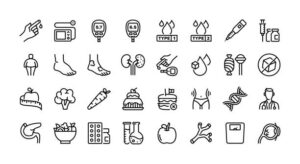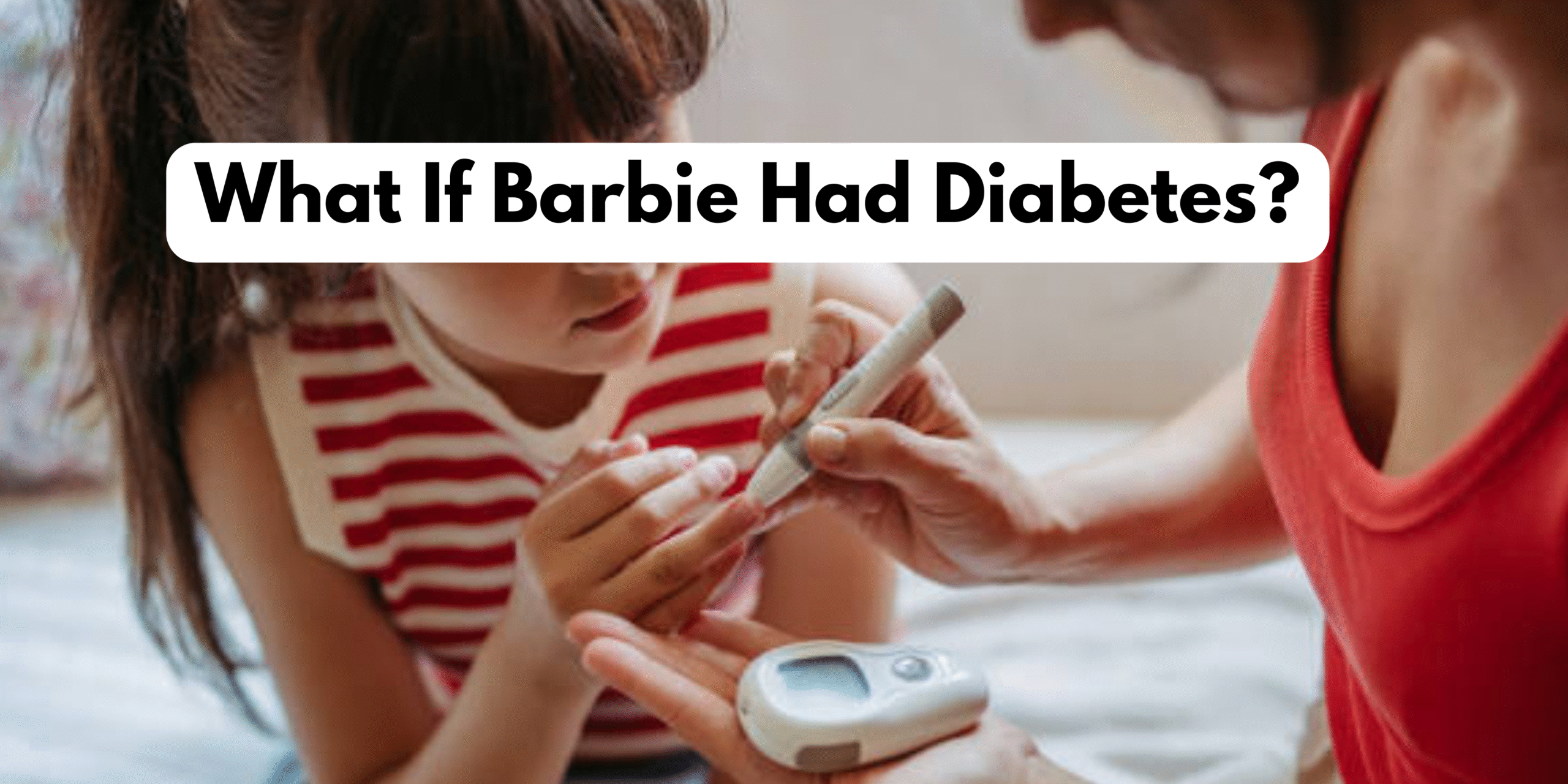What If Barbie Had Diabetes? Breaking Stereotypes in Kids’ Health Awareness
When you think of Barbie, what comes to mind? A dream house, perfect hair, glamorous outfits, and a picture-perfect life. But what if Barbie wasn’t all about perfection? What if we had a Barbie doll with diabetes?
It might sound unexpected, but imagine how empowering it could be for children living with diabetes to see a doll that represents them. A Barbie doll diabetes edition could completely change how kids think about health, beauty, and what it means to be strong in real life.
This is not just about a toy. It’s about creating awareness, promoting inclusion, and helping children understand that having a health condition does not define who they are. Let’s explore how a Barbie doll with diabetes could break stereotypes and make a real difference in kids’ health education.

The Image of Perfection and Why It Needs to Change
Since Barbie’s debut in 1959, she has been a cultural icon symbolizing ambition and imagination. Over the years, Barbie has taken on hundreds of careers — from astronaut to president. However, one thing has remained constant: she has always been perceived as “perfect.”
The issue with perfection is that it often excludes reality. For many children growing up with chronic illnesses like diabetes, that ideal image can feel alienating. When a child sees a toy that never struggles, never checks blood sugar, and never talks about health, they might start believing that being healthy or “normal” means having no challenges at all.
A Barbie doll with diabetes would change that narrative. It would say to every child: health conditions are a part of life, not a flaw. It would normalize diabetes management and show that beauty, strength, and ambition exist beyond stereotypes.
Why Representation in Toys Matters More Than Ever
Representation has power. When kids see themselves reflected in the toys they play with, they begin to believe in their own potential. For children with diabetes, such representation could build confidence and encourage acceptance.
A Barbie doll diabetes edition would not just be a product; it would be a message that:
- Managing a health condition does not limit you; it empowers you.
- Medical devices and daily care routines are a normal part of life and nothing to hide.
- Everyone deserves to see their reality represented in something as universal as a toy.
- Health education can start with play.
When a child plays with a Barbie that checks her glucose or carries a small insulin pump, they begin to view diabetes as something they can understand and manage, rather than something that separates them from others.
What Would a Barbie Doll with Diabetes Look Like?
Imagine Barbie’s world, but with small, realistic details that reflect the realities of real-life diabetes care. The Barbie doll with diabetes might come with:
- A miniature blood sugar monitor
- An insulin pen or insulin pump
- Healthy snack accessories
- Story cards that explain how Barbie balances her routine
Barbie could still wear her stylish outfits, work her dream job, and chase her goals. The only difference would be that she also manages diabetes — just like millions of real people do every day. That combination of style and authenticity could redefine what kids consider “normal.”
This type of toy would not only promote inclusion but also open doors to honest conversations between parents and children about health, nutrition, and self-care.
Understanding Diabetes in Simple Terms
To understand why a Barbie doll with a diabetes edition matters, it’s essential to know what diabetes actually is.
Diabetes is a condition that affects how the body uses glucose (sugar) for energy. Normally, insulin — a hormone made by the pancreas — helps move sugar from the bloodstream into cells. When the body either fails to produce enough insulin or can’t use it effectively, blood sugar levels rise.
There are two main types of diabetes:
- Type 1 Diabetes: The body doesn’t produce insulin at all. This form often appears in children or young adults.
- Type 2 Diabetes: The body makes insulin but doesn’t use it properly. It’s more common in adults but increasingly seen in children due to lifestyle factors.
For children, managing diabetes involves checking blood sugar, taking insulin (if necessary), eating a balanced diet, and staying physically active. It’s a lot for a child to handle, which is why representation through something familiar, such as a Barbie doll, can bring comfort and understanding.

The Emotional Impact of Representation
Imagine being a young girl diagnosed with diabetes. Suddenly, her life involves finger pricks, glucose monitoring, and dietary changes. It can feel overwhelming and isolating.
Now imagine that same child sees a Barbie doll with diabetes on a store shelf — confident, smiling, and managing her condition with grace. That image sends a powerful message: “You are not alone. You can do this too.”
For children, toys are more than entertainment. They’re tools for storytelling, imagination, and identity. A diabetic Barbie would help kids see that strength doesn’t mean perfection. It means taking care of yourself while still pursuing your dreams.
Breaking Health Stereotypes Through Play
For decades, Barbie represented one version of beauty: tall, slim, flawless. However, in recent years, Mattel has made significant progress toward inclusivity by creating dolls with diverse skin tones, body shapes, and representations of disabilities.
A Barbie doll diabetes version would continue that evolution. It would show that health conditions are part of real life, not something to hide. Kids with diabetes would feel represented, while kids without it would learn empathy and understanding.
By breaking these stereotypes early, we can help raise a generation that views health differences as normal variations, not limitations.
How Parents and Teachers Benefit from a Barbie with Diabetes
A Barbie doll with diabetes could also be an incredible educational resource. Parents and educators can use it to explain what diabetes is, why insulin is important, and how healthy habits work.
Benefits include:
- Early Health Awareness: Children naturally learn about the importance of nutrition, exercise, and medical care through play.
- Reduced Stigma: Seeing diabetes management tools as part of everyday play normalizes them.
- Empathy Development: Children who don’t have diabetes learn to understand and support those who do.
- Practical Conversations: Parents can use Barbie’s routine as an example to teach their children about balance and self-care.
When health education starts in a fun, non-threatening way, it sticks with children longer.
Teaching Healthy Choices in a Fun Way
If Mattel introduced a Barbie doll diabetes set, it could also include elements that teach children about healthy eating and lifestyle habits. Barbie could prepare fruit snacks, drink water, or go for a walk to stay active — not as a diet message, but as a lifestyle model.
This kind of play encourages children to make healthier food choices naturally. It connects wellness to positivity, not restriction.
Through a doll like this, kids could learn:
- How balanced meals help maintain stable energy levels.
- Why exercise is important for overall health.
- Managing health doesn’t mean missing out on fun.
Barbie could make wellness a normal part of the conversation.
What Kids Could Learn from Barbie Doll Diabetes Representation
Children learn through imitation. A Barbie doll with diabetes could quietly teach valuable lessons about real life.
- Everyone Is Unique: Having diabetes doesn’t make someone different in a bad way; it’s simply part of who they are.
- Taking Care of Yourself Is a Sign of Strength: Managing a health condition demonstrates responsibility, not weakness.
- Empathy Is Important: Understanding others’ challenges builds kindness and awareness.
- Health Awareness Can Be Cool: Learning about the body doesn’t have to be scary or boring.
By presenting these lessons through play, Barbie can turn education into empowerment.
If Barbie Had Diabetes in Real Life
If Barbie actually had diabetes, she would probably handle it like she handles everything else — with confidence and balance. She would check her blood sugar before a workout, take her insulin before lunch, and still make time to run her dream business or travel the world.
That’s the message kids need: diabetes doesn’t stop anyone from living a full life. It just requires planning, awareness, and care.
A Barbie doll diabetes storyline could include moments of self-care, responsibility, and triumph. It could demonstrate that health management is an integral part of real life, not an obstacle to success.
The Digital Side: Why This Topic Is Gaining Attention
In recent years, searches for Barbie doll diabetes have increased as parents and health advocates push for more inclusive toys. Online discussions about diabetes awareness and representation in the media have grown rapidly.
Content that connects children’s toys with health education performs well because it bridges two powerful areas — emotional connection and awareness. Parents, teachers, and brands are recognizing that children’s products can play a significant role in shaping healthy mindsets.
Creating conversations around Barbie doll diabetes online can help normalize these topics and spread awareness in an accessible way. It’s not just beneficial for SEO; it’s also helpful for society.
A Global Perspective on Barbie and Diabetes
Diabetes is a global issue. Millions of children across countries like Pakistan, India, the United States, and the UAE live with it. However, few educational toys or media representations show this reality.
A Barbie doll with diabetes could resonate internationally. It could encourage schools to host awareness events, prompt media discussions about childhood health, and inspire young people to care for their well-being.
Barbie has always been a symbol of ambition. With this step, she could also become a symbol of health empowerment worldwide.
Expert Views on Representation and Health Education
Psychologists and educators agree that inclusive toys can boost self-esteem and empathy in children. When children play with dolls that reflect different realities, they learn that diversity is a natural part of life.
Health experts also note that when children understand medical devices or health routines through play, it reduces fear and stigma. That means a Barbie doll diabetes version could do more than entertain — it could educate and heal.
If Mattel took this step, it would not only make history but also contribute to better public health education from a young age.
Why a Barbie Doll with Diabetes Matters
Creating a Barbie doll with diabetes is not about making another version of the same toy. It’s about redefining what “perfect” means. It’s about showing kids that they are enough — even when they live with a condition that requires daily care and attention.
It’s about teaching them that beauty includes strength, discipline, and compassion.
When children see Barbie checking her blood sugar and still conquering her day, they see that health challenges are just another part of life, not a limitation.
Barbie has always been a role model. Now, she has the opportunity to be realistic.
Final Thoughts
A Barbie doll diabetes edition would go beyond playtime. It would be a movement toward real-world awareness, inclusivity, and compassion.
For kids with diabetes, it would say, “You belong.”
For kids without it, it would say, “Understand and support others.”
For parents and educators, it would offer a bridge between play and health education.
If Barbie can be an astronaut, a doctor, and a CEO, she can also have diabetes and , still be everything she’s always been: strong, inspiring, and limitless.
Want to learn more about promoting health awareness and inclusivity in children’s toys? Check out this guide on kids’ health education and positive representation for deeper insights and expert tips.





